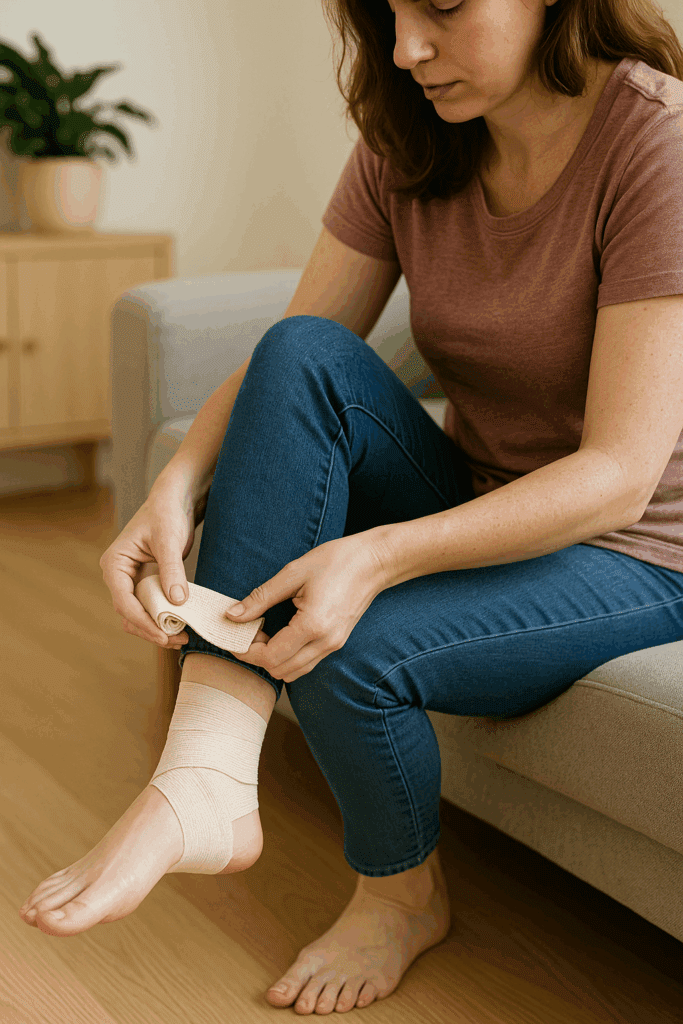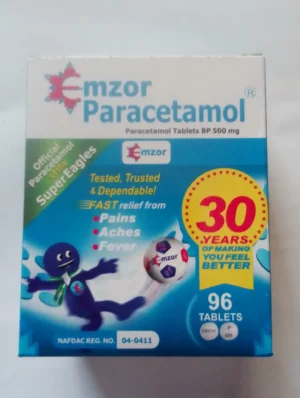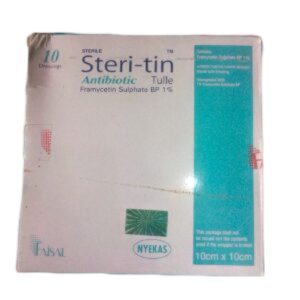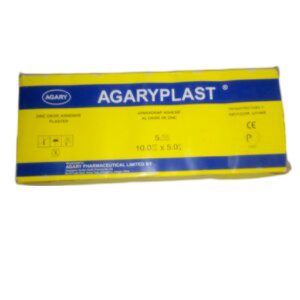Treating Minor Injuries: Simple Steps for Quick Relief

Please note: This article gives basic advice only. We don’t recommend self-diagnosis. Please talk to one of our pharmacists online — we’ll help you understand what’s really going on and what medicine is safest for you.
Contents
- Small cuts and scrapes
- Minor burns and hot water injuries
- Sprains, muscle strains, and bruises
- Blisters and skin rubbing
- When to go to a clinic or hospital
- Safety tips when using medicines
1. Small Cuts and Scrapes
How to know it’s a small wound
If it’s a shallow cut, maybe from a fall, kitchen knife, or scratch, and it’s not deep or bleeding heavily, it’s likely a minor injury you can treat at home.
What to do
- Wash your hands first.
- Rinse the wound gently with clean water to remove dirt.
- Press lightly with clean gauze or cloth if it’s bleeding.
- Apply an antiseptic like povidone iodine or methylated spirit (only on the skin around the wound, not inside).
- Cover it with a clean plaster or sterile gauze.
- Change the dressing once daily or if it gets dirty.
Recommended medication
See a doctor if the wound gets red, swollen, or produces pus after 1–2 days.
2. Minor Burns and Hot Water Injuries
How to know it’s a minor burn
If your skin is red, painful, and slightly swollen after touching something hot, or you see a small blister, it’s a minor burn.
What to do
- Cool the area immediately with running tap water for about 15–20 minutes.
- Do not use butter, toothpaste, or oil — they can trap heat and make it worse.
- Don’t burst blisters.
- Cover lightly with a non-stick dressing like sterile gauze.
- Take Paracetamol or Ibuprofen if it hurts.
Recommended medication
Go to the hospital for large burns or if it affects the face, hands, or private parts.
3. Sprains, Muscle Strains, and Bruises
How to know
You may have twisted your ankle, strained your wrist, or bumped into something. There’s pain, swelling, or bruising, but you can still move or walk.
What to do (R.I.C.E method)
- Rest: Don’t use the injured part for a day or two.
- Ice: Wrap ice in a cloth and place on the spot for 15–20 minutes every few hours.
- Compress: Wrap with a crepe bandage (not too tight).
- Elevate: Keep the injured area raised to reduce swelling.
Recommended Medication
If you can’t move the joint or pain lasts more than 3 days, please see a doctor.
4. Blisters and Chafing
How to know
You might see a small bubble on the skin filled with clear fluid, often from tight shoes or friction.
What to do
- Don’t pop it — the skin protects the area.
- Clean gently with water if it bursts on its own.
- Apply antiseptic and cover with a soft plaster or gauze.
- Keep the area dry and wear comfortable shoes or clothes.
Recommended medication
5. When to Go to a Clinic or Hospital
Seek medical help immediately if:
- The wound is deep, bleeding won’t stop after 10 minutes, or you can see bone or fat.
- There are signs of infection — pus, fever, spreading redness.
- The injury is from a rusty or dirty object (you may need a tetanus shot).
- You have a large burn or one on your face, hands, or private parts.
- You have a sprain that doesn’t improve after a few days.
6. Safety Tips
- Use painkillers properly: Don’t mix multiple products with Paracetamol or Ibuprofen.
- Antiseptics: Use on the skin around the wound, not deep inside it.
- Topical gels (like Diclofenac): Use only on unbroken skin.
- Check expiry dates before use.
- Keep a small first-aid kit at home — it saves time during small accidents.
Final Thoughts
Small injuries happen to everyone — a slip, a scrape, or a mild burn. Most of the time, they can be managed at home with simple care and the right products.
But if you’re unsure what to use, or if the injury looks worse after a day or two, chat with our pharmacists online. We’ll guide you on the safest, most affordable products for fast healing — and tell you when to see a doctor.
Stay safe, and take care of your body — it deserves gentle care, even for small injuries.
You may also like
- A Practical Guide to Weight Management, Weight Loss, and Nutrition
- A Guide to Preventive Health & Everyday Wellness
- Women’s Health, Made Simple: A Simple Guide for Healthy Living
- Men’s Health, Made Simple: A Guide to Feeling and Living Better
- A Simple Guide to a Healthy Pregnancy: What Every Expecting Mother Should Know









